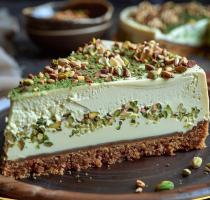Copy Link
Add to Bookmark
Report
Cider Digest #0776

Subject: Cider Digest #776, 18 November 1998
From: cider-request@talisman.com
Cider Digest #776 18 November 1998
Forum for Discussion of Cider Issues
Dick Dunn, Digest Janitor
Contents:
First Cider (Michael Tucker)
Subject: Re: Cleaning containers ("John A. MacLaughlin")
Re: Cider Digest #775, 15 November 1998 (John J. Cunniff)
Wild yeast, &c (Steve Butts)
Wild Yeast (Andrew Lea)
H2S production (Andrew Lea)
Pear juice (Anne Trowbridge)
pH determination ("cripley")
Send ONLY articles for the digest to cider@talisman.com.
Use cider-request@talisman.com for subscribe/unsubscribe/admin requests.
When subscribing, please include your name and a good address in the
message body unless you're sure your mailer generates them.
Archives of the Digest are available for anonymous FTP at ftp.stanford.edu
in pub/clubs/homebrew/cider.
----------------------------------------------------------------------
Subject: First Cider
From: Michael Tucker <mtucker@hesketh.com>
Date: Sun, 15 Nov 1998 11:34:01 -0500
Hi All,
I've made beer. I've made mead. Now I want to make a cider. Can someone
point me to a no-brainer, "safe" recipe? I'm going to shoot for a
sparkling cider similar to Woodpecker Draft if possible. Light apple
flavor, lots of bubbles.
thanks-
- ---
Michael R. Tucker
hesketh.com/inc.
mtucker@hesketh.com
http://www.hesketh.com
vox: 919.854.1570
fax: 919.854.1579
------------------------------
Subject: Subject: Re: Cleaning containers
From: "John A. MacLaughlin" <jam@clark.net>
Date: Sun, 15 Nov 1998 14:27:24 -0500
In Cider Digest #775 Eddy Hefford <ehefford@nescot.ac.uk> asks:
> Does anyone have any suggestions for practical, non-industrial cleaning
> techniques? [for removing "that distinctive orange concentrate" smell.]
May I suggest a hot sodium bicarbonate (baking soda) solution? I would
expect one pound per four Imperial gallons to be a useful concentration.
I would start with water between 100 and 130 degrees F but would not bother
to try to keep it above room temperature. Trial and error will teach you
how long it takes.
Best wishes.
------------------------------
Subject: Re: Cider Digest #775, 15 November 1998
From: ed372@cleveland.Freenet.Edu (John J. Cunniff)
Date: Mon, 16 Nov 1998 09:56:57 -0500 (EST)
Reply to message from cider-request@talisman.com of Sun, 15 Nov
>
>In Cider Digest #775 Chuck Wettergreen wrote:
>[snip]
>I must be the luckiest person on earth. Last year, after soliciting Andrew
>Lea's advice, (thanks Andrew) I did a natural press fermentation of a
>couple of barrels of apples that came my way. The juice fermented very
>well at about 45 degF and is one of the best ciders I have ever made. The
>apple aroma and flavor are astonishing. I'll be doing this very same
>"yeast roulette" this weekend, and *I* am certain that it'll ferment out
>just fine at 45 degF, and taste much better than any commercial yeast
>could do.
>
>Chuck
>chuckmw@mcs.net
>Geneva, IL
>
Has anyone tried making cider with lager yeast rather than ale or wine
yeast? I've been told that Wyeast's Bavarian lager yeast is very
good for making ciders with. I'm not philosophically opposed to
using wild yeast, except for the fact that I am buying the unfermented
cider and not pressing it myself. This could introduce all kinds of
nasties and I'd rather make cider than vinegar.
John
------------------------------
Subject: Wild yeast, &c
From: Steve Butts <stephen.j.butts@lawrence.edu>
Date: Mon, 16 Nov 1998 09:17:25 -0600 (Central Standard Time)
Colleagues:
One of the more difficult adjustments that beer-makers must make when
they move to the wine-like environs of cider is to their notion of
time. With beer, you boil it, WHAM! you cool it as fast as possible,
you pitch the yeast, WHAM! it fires up, WHAM! fermentation is done,
WHAM! you bottle and in a few days you're drinking the stuff.
Cider is different: everything takes much longer. I've waited as long
as two weeks for a natural ferment to begin, and most of the "primary"
fermentations I do, with various yeasts commercial and wild, run 2-3
weeks at 45 to 55 deg. F. I generally press in mid- to late October
here in Wisconsin (earlier this year) and let the "secondary" run till
at least March at the coldest reasonable temperature I can manage. And
I let most of the bottles rest for an additional six months before
drinking. The result is an absolutely clear medium-alcohol (5-6%)
beverage with the tannin smoothed out and no funny yeast or other
off-flavors. (Well, most of the time.)
If you're into wild yeasts, it's certainly OK to take a quart of your
must and put it on the refrigerator top with an airlock at about 70
deg. F. That should start the beasties sooner. But I would definitely
keep the main body of your juice at 50-55 and colder during the secon-
dary.
Relax. Take some time. Have a homebrew while you're waiting.
- ----------------------
Steve Butts, Lawrence University
stephen.j.butts@lawrence.edu
____________________________________________________________
Marx was wrong. History repeats itself THREE times: once
as tragedy, then as farce, and finally as a TV commercial.
____________________________________________________________
------------------------------
Subject: Wild Yeast
From: Andrew Lea <andrew_lea@compuserve.com>
Date: Mon, 16 Nov 1998 16:06:48 -0500
I have to agree with Dick and to say that a lot of us out here are
interested in the more complex flavour profile resulting from so-called
wild yeasts in long slow fermentations. And we're in good company - the
French cider research institute at Rennes have been working for a while on
the beneficial effects of Kloeckera apiculata, Metschnikowia pulcherrima
and wild strains of Saccharomyces cerevisiae. I just visited the Food
Science Department at the Geneva Research Station, upstate New York, and
their yeast people are now interested in this for the grape wine industry
too.
Much good has undoubtedly come of the use of 'pure' yeast cultures over the
years, but there's also a feeling that we've 'chucked the baby out with the
bath water' and we need to re-examine the role of a more diverse and wild
type mixed microflora. My old Long Ashton boss Fred Beech, who did more
than anybody to introduce the use of pure yeast cultures into the UK cider
industry over 30 years, told me just before he died a couple of years ago
that he felt the pendulum had swung too far and we should try to bring it
back a bit. The large manufacturers never will, for fear of a lack of
consistency, so it has to be left to us at the 'craft' end of the business.
We need to learn how to welcome the wild yeasts into our fermentations but
to keep them in check so they end up as friends not foes. For my part, the
best and most flavour-complex ciders I've so far made are with lightly
sulphited wild yeast fermentations. Though I would advise, as I've written
elsewhere, that the beginner starts off with a conventional pure culture
fermentation simply to gain experience of what cider making is all about
before taking off for these new (or very old!) horizons.
Incidentally, here in the Oxfordshire / Berkshire corner of the UK, Roy
Bailey and myself are experimenting this season with a French enzyme which
promotes reliable 'keeving' - a means of clarifying and removing nitrogen
from fresh juices so they can undergo exactly the sort of long slow (4-6
month) wild yeast fermentation which we're looking for in this context.
We'll keep you posted!
Andrew Lea, nr Oxford, UK
http://ourworld.compuserve.com/homepages/andrew_lea
------------------------------
Subject: H2S production
From: Andrew Lea <andrew_lea@compuserve.com>
Date: Mon, 16 Nov 1998 16:06:50 -0500
Production of hydrogen sulphide in wines and cider can result (amongst many
other things) from the reduction of added sulphur dioxide by yeast and is
strain dependent. Some wine yeasts are notoriously bad - I don't have
chapter and verse in front of me but I seem to recall that the commonly
used Montrachet 522 is a particular offender, whereas Champagne (UC Davis
595) and Epernay 2 are low H2S producers according to one textbook. Some
years ago one of the major UK cider companies spent much time and money
setting up their own yeast plant with a selected strain which did NOT
produce H2S, so bad was the problem when they used most commercially
available strains. I believe this has been an especial problem in the
Australian wine industry, who seem to have suffered it more than elsewhere
(perhaps due to high sulphate in the soil??). To some extent it's also
nutrient and vitamin dependent, so by adding ammonium phosphate and a
vitamin mix (including B1, B5 and B6) before fermentation the problem can
be minimised. Not much good if you're trying for a long slow wild
fermentation though!!!
Removal of H2S after it's formed is tricky but in the wine industry copper
sulphate is often used. US regulations for wine permit the addition of 4
grams of cupric sulphate per 1000 gallons of wine, which gives 0.2 ppm
copper. The H2S binds to it and is removed. But some sulphury taints are
due to mercaptans and other organic disulphides which are not removed by
this treatment. Best to do it as soon after fermentation as possible to
try to combat this.
Additional note for the curious: brandies and whiskies are traditionally
distilled through copper because (a) it has good heat transfer
characteristics (b) it's malleable and ductile BUT ALSO (c) the copper
removes offensive sulphur compounds during distillation. This is true.
Experience has shown that inert metals and glass are not as good for
ultimate flavour character!
Andrew Lea, nr Oxford UK
http://ourworld.compuserve.com/homepages/andrew_lea
------------------------------
Subject: Pear juice
From: Anne Trowbridge <altrow@uswest.net>
Date: Mon, 16 Nov 1998 18:13:19 -0700
In reply to Jeff's query on pear juice, check with local
juice/cider producers. We're fortunate in Colorado to have
the Western Slope orchards. I've made contact with a
(non-fermented) cider maker who supplies the local natural
food stores and grocery chains with some great organic,
unpastuerized juices. I persuaded my local homebrew club to
make bulk purchases of a few different custom blends,
including one this fall which was around 85% pear. We
purchase the entire pressing volume (20-24 gal min, not a
problem for an active club). We specify the % blend of
available apple varieties (the usual
Delicious/Jonagold/Jonathan
/Granny Smith/Winesap varieties). We are limited to what is
available locally, and seasonally. We only get pear when
pear is in season- While it's probably too late for this
season, start scouting local producers for next year. One
last thing - pear is the only fruit I've fermented that has
consistently produced spontaneous malo-lactic fermentation.
Suggest you read up on it in wine books, or plan to sulfite.
Anne
------------------------------
Subject: pH determination
From: "cripley" <cripley@netcom.ca>
Date: Tue, 17 Nov 1998 23:22:34 -0500
There have been references to pH measurements of cider in the digest. I am
looking for a simple but reasonably accurate means of making this
measurement. I have looked at several pH meters but with buffering solutions
etc these things start to get expensive. I have seen pH test strips but I am
not sure how well these work. I look forward to your comments.
With regard to crushers I saw a suggestion that a food waste disposal unit
might do the job. Has anyone tried this and do you think there may be a
problem with contamination?
Thanks
Carl Ripley
cripley@netcom,ca
------------------------------
End of Cider Digest #776
*************************



























